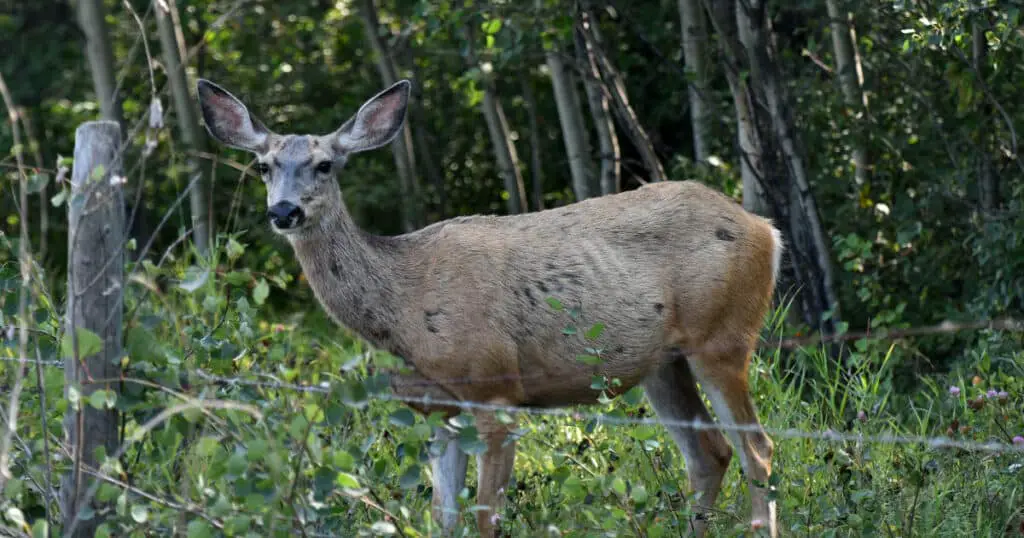You may have heard of “zombie deer disease” and wondered what it is? If you are a hunter or live in an area with deer populations, you should be aware of this condition. In this article, we will go over what CWD is and other facts about chronic wasting disease. While zombie deer disease doesn’t actually turn deer into zombies, it is a devastating condition that leads to emaciation and holes in the brain. We’ll explore CWD Deer Symptoms, transmission, and what you need to know about CWD in local deer populations near you.
CWD always leads to death, and there are no treatment options.
What is CWD (Chronic Wasting Disease)?
Table of Contents
ToggleChronic wasting disease (CWD) is also sometimes referred to as “zombie deer disease.” It’s a prion disease that infects Whitetail Deer, Mule Deer, and related species such as Elk, Reindeer, Moose, and Sika Deer. When an animal is infected with this disease, it will certainly lead to their death.
CWD has been identified in several areas of North America, including both numerous states in the United States and in Canada. It has also been found in Norway and South Korea.
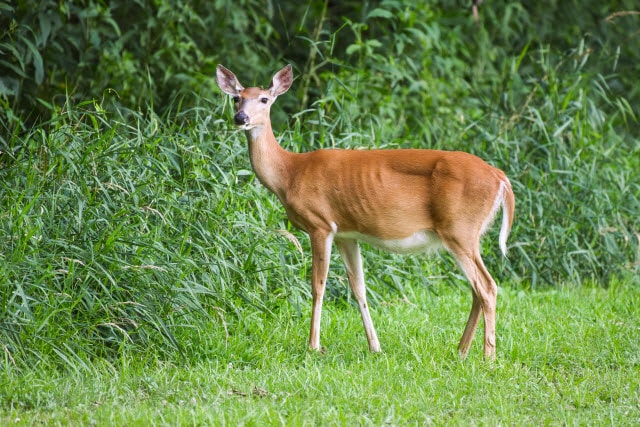
CWD is a progressive disease, meaning it gets worse with time. It primarily impacts the spinal cord, brain, and other tissues in the affected animal.
CWD is a prion disease. In other words, it’s one of the TSEs (transmissible spongiform encephalopathy) diseases. Other examples of TSEs include Scrapie in goats and sheep and bovine spongiform encephalopathy (Mad Cow Disease) in cattle. In humans, there is a prion disease called Creutzfeldt-Jacob disease.
It’s thought that the cause of CWD in deer is abnormal proteins referred to as prions. These prions are believed to damage other prion proteins that are normal in structure.
Prion proteins are found all over the body, but they are especially concentrated in the spinal cord and brain.
What are the Symptoms of CWD?
When an animal has CWD, it may take a year or more for it to develop symptoms. That is because of its long incubation period. There are some cases in which the animal doesn’t show any symptoms of CWD until several years after initial infection. When a deer does become symptomatic, however, some of the symptoms of CWD include:
- Stumbling
- Confusion
- Weight loss (also called wasting)
- Listlessness
- Other neurological symptoms
- Lack of fear around humans
- Drooling
- Excessive urination or thirst
- Drooping ears
- Lack of coordination
Additional CWD Symptoms to Look For
Something else you might notice in clinically ill animals with CWD is that they have a strangely wide posture. They may also have a dull expression and have lowered ears and head.
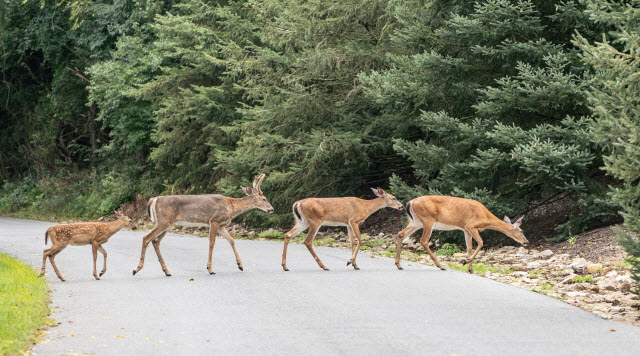
The coat may also be affected, looking a bit shaggy. Be aware that those symptoms don’t tend to show up until the later (terminal) stages of CWD.
One problem with CWD is that because of the long incubation period, deer may shed infective prions before they show symptoms of any kind.
How Are Deer with CWD Diagnosed?
It’s impossible to diagnose CWD just with symptoms, but you must be cautious and avoid deer with those symptoms. In order for a definitive diagnosis to take place, experts must do post-mortem testing in the laboratory.
They specifically focus on parts of the lymph nodes in the throat, as well as the brain and spinal cord. If you see a deer with these symptoms, you should stay away from it and contact local wildlife authorities.
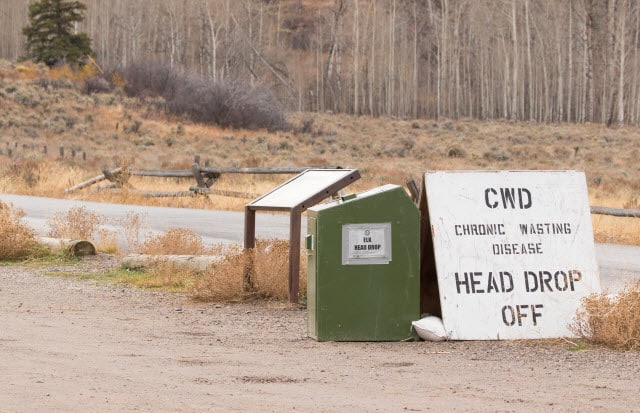
They need to know that there may be CWD in the area, as it spreads quickly from deer to deer.
One of the reasons why it can be challenging to diagnose CWD is because some of its symptoms can also simply be signs of malnutrition and other kinds of diseases that deer populations suffer from.
Can CWD Infect Humans?
There is no evidence at this point that CWD can infect humans. However, you should still be very careful when handling deer and butchering deer, as the possibility hasn’t been definitely ruled out.
In fact, studies showed that non-human primates (specifically monkeys) caught CWD from infected deer meat. Another prion disease that is related to CWD is mad cow disease, where ingesting nerve tissue from the brain or spinal cord of cattle infected with mad cow disease has caused humans to contract the variant Creutzfeldt-Jakob disease (vCJD), which is fatal for people.
This is why in 1997, the WHO (World Health Organization) began recommending that all necessary steps be taken to stop meat contaminated with prion diseases from getting into the human food chain.
If you think that a deer might have had CWD, never touch or eat its meat. Make sure to take some time to learn What CWD looks like in Deer Meat.
How is CWD Spread?
Experts believe that CWD is spread between deer when there is contact with tissue or body fluids contaminated with the disease.
It may also be caused by more indirect environmental exposure to the disease, such as in food or drinking water. The species of deer that can get CWD include white-tailed deer, black-tailed deer, mule deer, red deer, reindeer, Sika deer, moose, and North American elk.
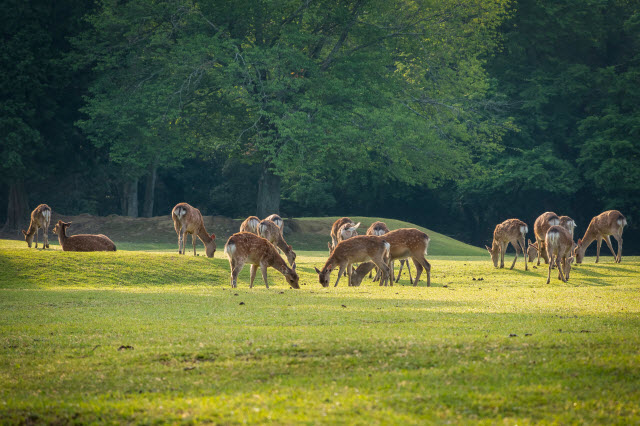
CWD prions are extremely resilient. In fact, once they have contaminated an area or landscape, they can remain infectious for extremely long periods of time, even years.
It is present in bodily fluids, feces, and carcass parts of the infected animal. It will contaminate plants and soil, and it is extremely hard to get rid of these contaminants, as they are resistant to chemical agents for denaturation, including disinfectants. They can even resist incineration.
The presence of CWD in a population of deer is a serious problem because of how quickly it spreads. Once wildlife authorities recognize that the disease is in the population, they will follow certain steps to try to contain it.
Be aware of whether there is CWD in your area before attempting to hunt for deer. Never get near a deer you think might have CWD.
Hunters Must Use the Correct Procedures
Hunters are on the front lines of interacting with deer populations, so their understanding of CWD is crucial for helping control its spread.
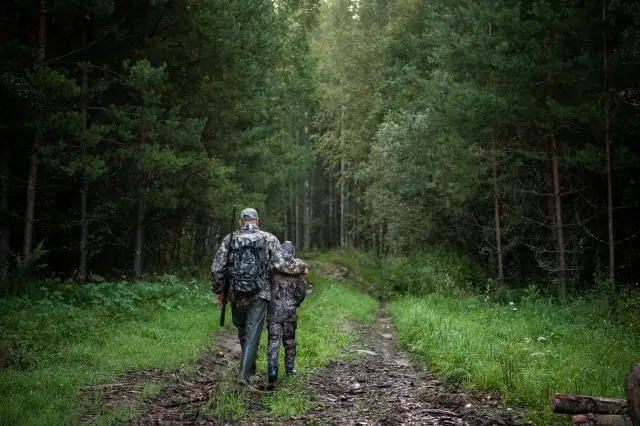
If you hunt deer, you should always use correct field dressing procedures. Always follow best practices when it comes to handling and disposing of deer carcasses.
If you hunt in a surveillance area for chronic wasting disease, you must submit the deer’s lymph nodes to be tested.
Find out about any and all movement restrictions when it comes to deer and deer meat in your region.
Never bring deer or deer meat across state lines without first making sure you are following all appropriate rules. Different regions and states have different rules. Use proper sanitation procedures.
Wear latex gloves when you are field dressing deer carcasses. You must also wash your hands and thoroughly, and disinfect your instruments with a bleach solution. Don’t use household knives or equipment when butchering deer to avoid contamination to your kitchen and dining equipment.
It’s best to avoid sawing through deer bones. Take care to avoid contact with neurological and lymphatic tissue. This includes the spine, brain, and lymph nodes.
How is CWD Related to Mad Cow Disease?
Mad cow disease was a disease affecting cattle in the United Kingdom in the 1990s. Like CWD, it is caused by abnormal prions and leads to holes in the brain, emaciation, confusion, and eventual death.
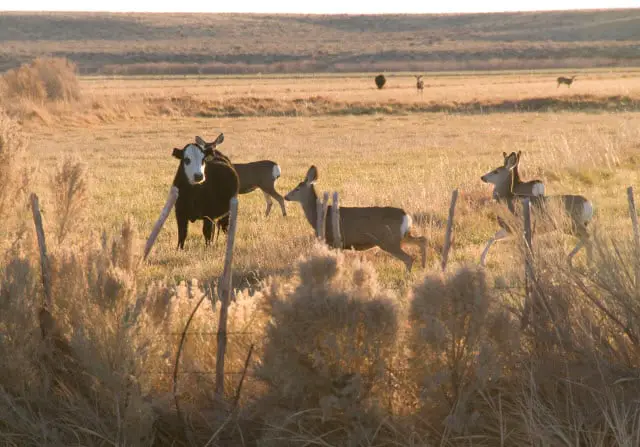
Mad cow disease’s formal name is bovine spongiform encephalopathy (BSE). Humans can end up with a lethal BSE variant called Creutzfeldt-Jakob disease (vCJD) by eating beef contaminated with the disease. This is one reason why scientists worry that it may be possible for a human to one day contract CWD.
If a human contracts CWD, there is no treatment and death will result. The progression of the disease is horrific, including psychiatric and neurological deterioration, confusion and problems with balance and coordination, and involuntary muscle spasms and jerks.
Be Cautious When Handling Deer
If you hunt deer, it’s essential that you are aware whether you are in an area with a CWD problem. Even if you are not, you must still take all necessary precautions and have your eye out for strangely behaving deer.
Use best practices and correct hygiene, and inform authorities if you notice any indication there could be CWD in the deer population where you hunt.

